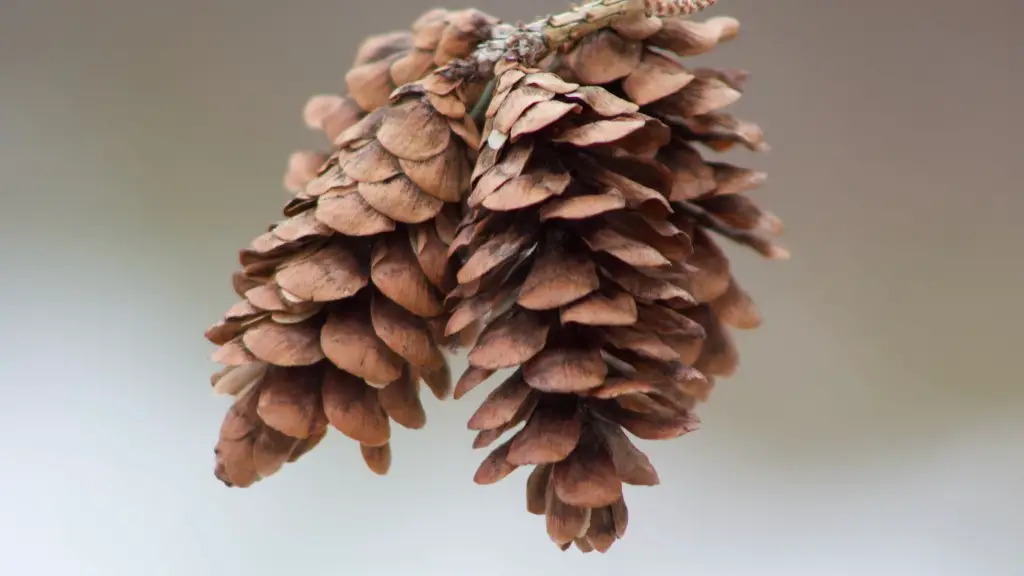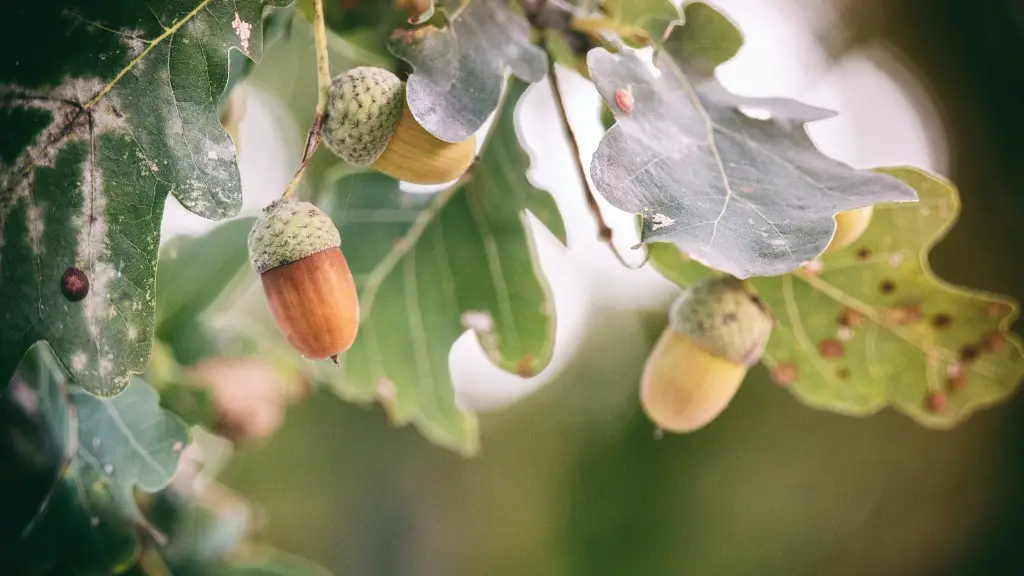Avocados: An Overview
Avocados are one of the most beloved fruits in the world and are widely praised for their nutritional content, culinary applications, and health benefits. This hand-sized, creamy fruit grows on evergreen trees that thrive in tropical and subtropical climates. The trees can average anywhere between 10 and 65 feet tall, and bear thousands of fruits per year.
Avocado trees have large, shiny, dark green leaves that are in the shape of an egg. The fruits themselves are green, although some varieties are black, yellow, or burgundy when ripe. The inside of the fruit is filled with a creamy texture, with a single large seed in the center. Avocados are usually enjoyed ripe, fulfilling the promise of a rich, creamy, sweet taste.
The nutritional benefits of avocados are vast, containing many vitamins, minerals, and antioxidants. Avocados are also an excellent source of fiber, containing 17% more fiber than lettuce and 20% more fiber than spinach. In addition to these health benefits, avocados are low in calories, making them a top choice for weight management.
Avocados are very versatile, and can be enjoyed in a variety of dishes. They are most often eaten raw in salads, smoothies, and sandwiches. They can also be used in baking, or to make avocado ice cream, chocolates, and mayonnaise. Guacamole is a popular appetizer made from smashed avocados that is typically served with chips or toast points.
Experts recommend taking a few precautions when it comes to buying avocados. In order to pick the perfect one, check for a dark color, firm exterior, and slight give when gently squeezed. If the avocado is too firm, it’s unripe, and if it’s too soft and mushy, it’s overripe. Ripe avocados will be ready to eat within two to three days of purchasing.
Growing Avocado Trees
When it comes to growing avocados, there are two main methods for doing so: via seeds or cuttings. Growing an avocado tree from seed is possible, although it can be a slow process. This method is best used for ornamental purposes. If a person is looking to harvest the avocados, the quickest way to start growing a tree is by using a mature cutting.
When selecting the proper spot for a tree, experts recommend planting it somewhere that gets full sun and is sheltered from strong winds. The soil should be well-draining, and enriched with compost. Mulch can also be added to protect the tree from the cold. Avocado trees should be planted in early spring for ideal temperatures.
When watering an avocado tree, be sure not to overwater. Avocados like lots of water, but too much water can saturate the soil, resulting in root rot. Watering twice a week should suffice, or when the soil feels dry to the touch.
The avocados should be harvested when they are green and ripe, a process that will vary depending on the variety of the tree. When holding the avocado in the palm of the hand, it should feel slightly soft yet still firm. Avocados will continue ripening after they are harvested, no matter what color they are.
Caring for an Avocado Tree
Pruning an avocado tree is necessary for its health, as it helps promote new growth, increase air circulation, and keep the tree at a manageable size. Pruning should occur when the tree is in its resting period, which is typically in late winter or early spring. Start by removing any dead, weak, or diseased branches, then shape the tree and cut away any overgrown branches.
Harvesting an avocado tree is also an important process, as it ensures the proper care of the tree and allows for optimal ripeness. It’s important to pick the avocados when they are still on the green side, as they will continue to ripen after they are harvested. Inspect the avocado periodically and pick each one when it is ready.
Pest control is also very important, as left unchecked, some insects can cause serious damage to an avocado tree. Careful inspection of the trees foliage and trunk should be done regularly to keep the tree healthy. If a pest is identified, manual or chemical removal may be required.
Fertilizing Avocado Trees
Most experts recommend fertilizing an avocado tree twice a year in order to promote healthy growth and a good crop of avocados. Specialty avocado fertilizer can be purchased from gardening stores that include all of the necessary NPK for avocados to thrive. Before applying any fertilizer, make sure to work the soil and add plenty of compost or manure, as this will help the tree absorb the nutrients more efficiently.
When applying fertilizer, always use the recommended amount on the product’s packaging. Too much fertilizer can cause the tree to become unnaturally large, and the leaves can become deformed. Additionally, too much fertilizer can get into the water system, affecting neighboring plants and animals.
Foliar fertilizing is another option that can give an avocado tree a boost. Foliar fertilizing is when the nutrients are sprayed directly on the leaves of the tree, which can help promote growth and a good yield of avocados.
Avocado Diseases
Avocado trees can be susceptible to a number of diseases, such as root rot, blight, and yellow shoulder disease. Identifying the disease is the first step to treating it, as the treatments will vary depending on the situation. If the disease is beyond treatment, the tree may have to be removed and destroyed.
It’s always important to inspect an avocado tree regularly, as this can help identify potential problems early on. If a leaf is yellowing or discolored, any pests are present, or the branches are beginning to die back, these can all be signs of an underlying issue. Taking action early can help to prevent further damage to the tree.
Harvesting Avocado Fruit
Avocados ripen at different rates, depending on the variety and time of year they are grown. The average avocado tree will reach maturity in three to five years and will bear between 500 and 600 pounds of fruit per year after it is established. When harvesting the fruit, check that the fruit is firm but not hard, then gently twist it off, or cut with a knife. The fruit should come away almost effortlessly and can be kept in storage for up to four weeks.
Avocado trees are low-maintenance and hardy, making them a great addition to any garden, but they require the proper care and attention to produce the best yield. Following these simple tips can help ensure that an avocado tree is healthy, and will produce plenty of delicious avocados.
Health Benefits of Avocados
Avocados are praised for their vast array of beneficial vitamins, minerals, and antioxidants that can help support and promote a healthy lifestyle. Not only are they nutrient-dense, but they are low in calories, making them a go-to snack or addition to meals.
Avocados help speed up the body’s metabolism, making it easier to lose and maintain a healthy weight. They also contain potassium, magnesium, and heart-healthy fats, which help to lower the body’s levels of cholesterol, reducing the risk of heart disease. Avocados are also high in fiber, which is important for optimal digestive health.
In addition to the vitamins and minerals that avocados contain, they also contain a number of beneficial plant compounds, such as lutein and zeaxanthin, which help to protect against age-related vision loss. Avocados also contain carotenoids, which may help to protect against certain types of cancers. The creamy texture of the fruit is also rich in healthy monounsaturated fatty acids, which can help to regulate blood sugar levels.
What to Consider Before Eating Avocado
Due to their popularity, avocados have become increasingly available in markets and grocery stores, with more varieties now available than ever before. Before buying and eating avocados, there are a few things to consider. It’s important to make sure the fruit is ripe and not overly soft or hard, and that there is no discoloration that could indicate it is past its prime.
When selecting an avocado, it’s also important to know where it was grown. Many avocados are imported from other countries and may not be as fresh as those grown locally. It’s always best to buy organic, locally-grown produce to ensure the highest quality and the most beneficial nutritional content.
Finally, be mindful of how much avocado you add to your meals. Despite their health benefits, avocados are still high in calories and fat, and should be enjoyed in moderation.



